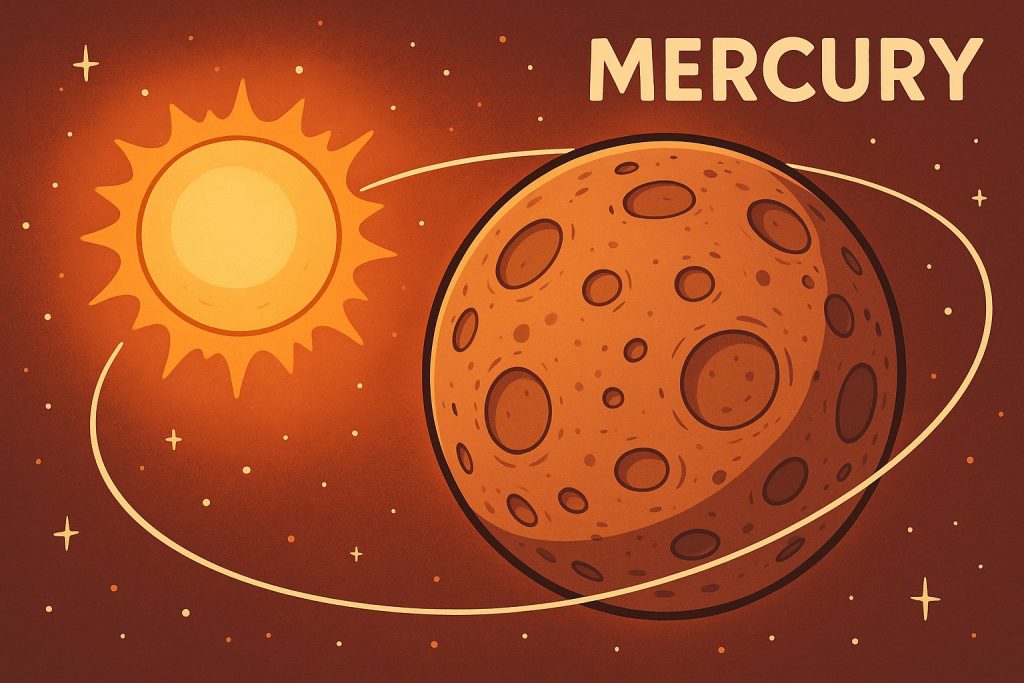Mercury is the closest planet to the Sun and the smallest in our solar system. Despite its proximity to the Sun, it’s not the hottest planet—Venus holds that title. However, Mercury is one of the most fascinating celestial bodies due to its extreme temperature changes, cratered surface, and rapid orbit.
Physical Characteristics
Mercury has a diameter of about 4,880 kilometers, making it slightly larger than Earth’s Moon. Its surface is covered in impact craters, similar to the Moon, due to a lack of atmosphere to shield it from meteors. The planet has no moons or rings.
Mercury’s core is unusually large for its size—about 85% of the planet’s radius—which suggests a dense metallic composition. This core contributes to a weak but detectable magnetic field, which is rare for a planet without a thick atmosphere.
Orbit and Rotation
Mercury orbits the Sun in just 88 Earth days, making it the fastest-moving planet. However, its day is extremely long—it takes 59 Earth days to complete one rotation on its axis. Interestingly, due to this rotation-orbit relationship, a single day from sunrise to sunrise on Mercury lasts about 176 Earth days.
Because it’s so close to the Sun, observing Mercury from Earth is difficult. It appears only near sunrise or sunset and never ventures far from the Sun in the sky.
Temperature Extremes
Mercury experiences the most dramatic temperature swings in the solar system:
- Daytime temperatures can soar to 430°C (800°F).
- Nighttime temperatures can plummet to −180°C (−290°F).
This is due to its thin exosphere (an almost nonexistent atmosphere), which can’t trap heat. So while Mercury bakes during the day, it rapidly cools at night.
Exploration of Mercury
To date, only two space missions have visited Mercury:
- Mariner 10 (1974–1975): The first spacecraft to fly by Mercury, it mapped less than half the surface.
- MESSENGER (2004–2015): Orbited Mercury over 4,000 times and provided detailed images and data about its composition, magnetic field, and history.
A third mission, BepiColombo (a joint ESA–JAXA mission), launched in 2018 and is expected to reach Mercury in 2025 for detailed analysis.
Why Mercury Matters
Studying Mercury helps scientists understand the early solar system. Its heavily cratered surface and iron-rich core preserve records from billions of years ago. By learning more about Mercury, we gain clues about the formation of Earth and other rocky planets.
Glossary
- Orbit: The path a planet takes around the Sun.
- Rotation: The spinning of a planet on its axis.
- Exosphere: The outermost layer of an atmosphere; Mercury’s is extremely thin.
- Magnetic Field: A field around a planet created by the movement of metal in its core.


